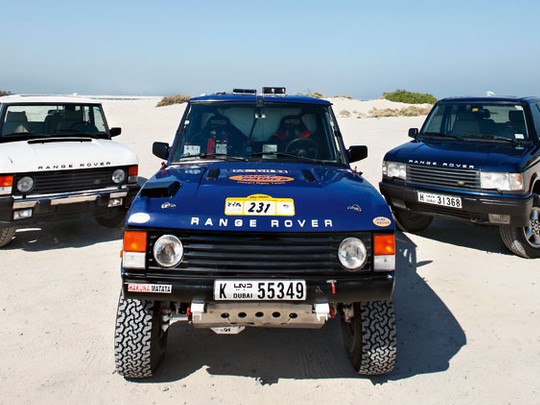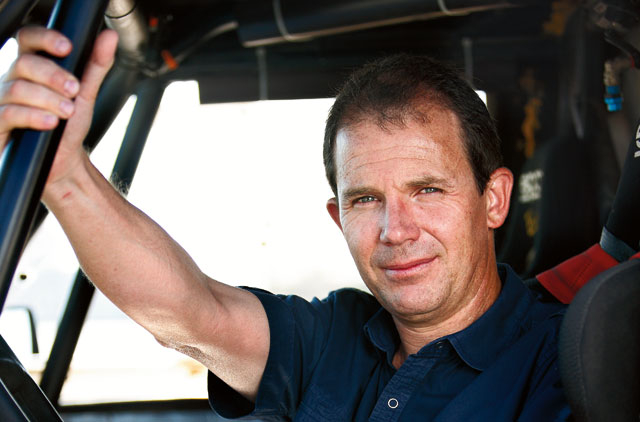
Malcolm Anderson's face breaks out into a huge smile when he starts talking about the Range Rover. "I was about four years old when the Range Rover was launched and I remember when it came to Kenya and going for a ride in one with my father - it was amazing!"
Anderson has owned three Range Rovers and is a regular at the Abu Dhabi Desert Challenge with his 1990 four-door Range Rover Classic 4.2 V8 with his Dune Raider team.
Until Range Rover came along, comfort and off-road ability just didn't go together, he says. The very first model that he got a ride on "just had coil springs and V8 engines, and windows that went up and down. I can remember that ride even today. It was an amazing machine - we were going off road in the bush, over rough terrain and it was soaking up the bumps! The noise of the V8 was the dream of a young boy. From that day I knew I was going to get a RR."
Luxury in an SUV - this was the reason the Land Rover company decided to make a new luxury nameplate way back in 1966 (it went on sale in 1970). It was the brainchild of Charles Spencer ‘Spen' King, the Rover company's engineering chief for new vehicle projects. His uncles - Spencer and Maurice Wilks - had jointly founded Land Rover in 1948.
"The idea was to combine the comfort and on-road ability of a Rover saloon with the off-road ability of a Land Rover," said King during the Range Rover's 40th anniversary celebrations in June last year. "Nobody was doing it at the time. It seemed worth a try, and Land Rover needed a new product."
The car was designed by a team of engineers headed by King, who had already worked on classics such as the Marauder sports car and the Rover P6 series. The brief was to design a multi-purpose vehicle that had the off-road capability of the Land Rover, was suitable for high-performance on the road, and also offered the driver and passengers some comfort.
The notion of a luxury SUV was revolutionary for that time. Most SUVs - including Land Rovers - were utilitarian, purpose-built vehicles that excelled as off-road vehicles, but not as family vehicles. The Range Rover changed that, combining aesthetic design and creature comforts with the four-wheel-drive formula.
"My father, a wildlife veterinarian, had two old Land Rovers in Kenya when I was a kid," says Anderson. "So I was used to being in LRs and in the bush, being bounced around. Then came this new vehicle. It had a comfortable suspension, a powerful engine, and big windows that even a kid could see through. It is hard to say why it affected me so much, but it did. It was different, it stood out from the crowd. It ended up being displayed at the Louvre museum in Paris as a work of art."
Little wonder then that the Range Rover was an instant success. "The fact this particular model, the Classic, survived without even a facelift from 1970 to 1995, I think speaks for itself," says Anderson. "When they introduced the new model, they overlapped production for more than a year because they were not sure if people were going to accept losing the Classic, as it came to be known.
"It's not difficult to see why it was so successful. Like the current version, the original Range Rover is such a simple and iconic shape."
What drives Anderson to take part in desert challenges in his bare-bones two-decade-old Range Rover?
"I've always had a competitive nature, an independent spirit, keen on adventure. Driving a 4x4, in my case a Range Rover, gives you the ability to do almost whatever you want within reason."
For Anderson, a car will always be a Range Rover. "For me it's the one vehicle that I can use for all purposes. It has and is used by royalty on the one hand, yet was the first vehicle to drive across the Amazon! It has transited the Sahara and we use it to compete in the Desert Challenge, as a 20-year-old car, and beat vehicles that are brand new!"












